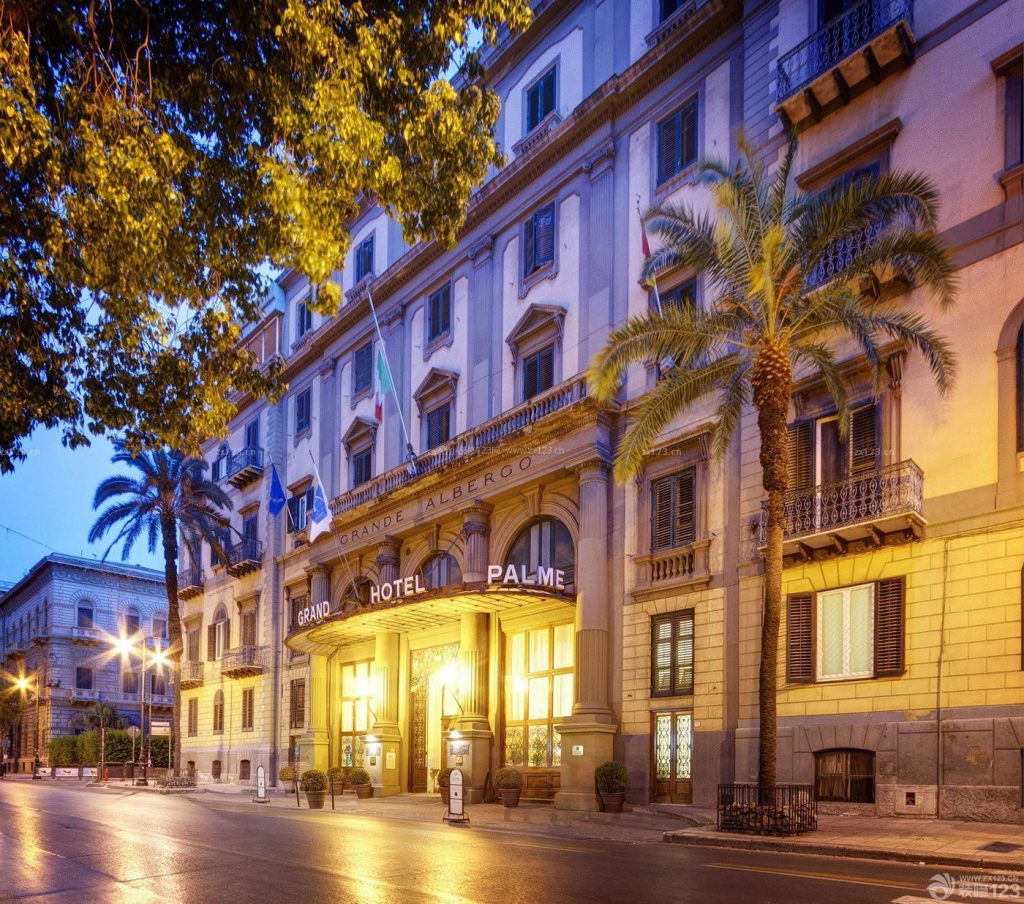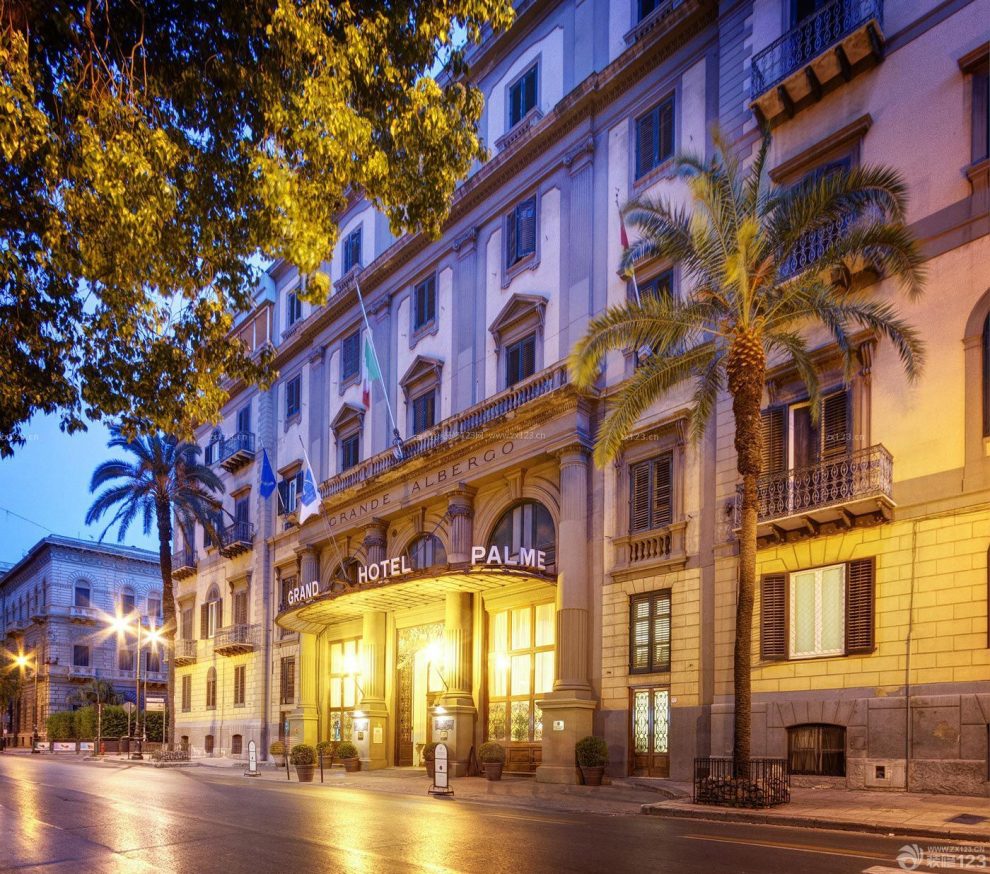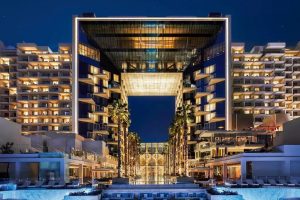This article will detail Shangri-La Hotels, a hotel brand that has grown globally from its origins in Singapore.
Shangri-La Hotels and Resorts is an international luxury hotel group with four brands and more than 100 hotels and resorts in 76 destinations across 22 countries and regions, renowned for their elegance, transformational service and Asian flair.

History of Shangri-La Hotels and Resorts
Shangri-La Hotels and Resorts is Asia’s leading luxury hotel group. The brand is derived from James Hilton’s novel Lost Horizon, a paradise in the mountains of Tibet, China. Shangri-La Hotels is founded by Mr. Kok Hak Nim, one of Malaysia’s most prominent entrepreneurs and founder of the Kerry Group. Mr. Kuo was born in 1923 in Johor Bahru, Malaysia, and is originally from Kuo Residence Village, Gaisan Town, Cangshan District, Fuzhou City, Fujian Province. Showing business acumen and entrepreneurial spirit from an early age, he founded the Kok Brothers Limited Group in Malaysia with his brothers in 1949, engaging in the trading business of rice, sugar and flour. 1953 saw the establishment of Kok Brothers (Singapore) Pte Ltd. in Singapore, which gradually expanded its business to Thailand and Indonesia, and in 1974, the establishment of the Kerry Group Ltd. in Hong Kong, which started to invest in the investments in mainland China. Kerry Group’s businesses cover a wide range of areas including food and oil, beverages, real estate, logistics and marine engineering, with the most notable being the Shangri-La Hotels Group.
The history of Shangri-La Hotels and Resorts begins with the opening of the Shangri-La Hotel, Singapore in 1971, the first hotel to use the name Shangri-La, which was then managed by Western International Hotels, U.S.A. In 1982, Shangri-La International Hotel Management was established, and in 1984, the Shangri-La Hotel, Singapore was transferred to the management of Shangri-La International Hotel Management. In the same year, Shangri-La opened its first hotel in mainland China, the Shangri-La Hotel, Hangzhou. Since then, Shangri-La has grown rapidly in the mainland China market, opening a number of luxury hotels in cities such as Beijing, Shanghai, Guangzhou, Shenzhen, Nanjing and Qingdao, as well as launching the Kerry brand and the Traders brand to cater to the needs of different customer segments.
To date, Shangri-La has a cumulative total of 44 hotels in the mainland China market, covering a total of 37 cities. Shangri-La is renowned for its “heartfelt hospitality” and Asian cultural heritage, providing guests with comfortable and elegant stays and high quality service. 2021 marks the 50th anniversary of Shangri-La Hotels and Resorts, and the launch of a series of short films entitled “Strength from the Heart of Asia”, which showcases the concept of growth and advancement of the Shangri-La community in Asia. Shangri-La celebrates its 50th anniversary in 2021 with a series of short films entitled “From Asia with Strength”, showcasing Shangri-La’s philosophy of growing and advancing with the Asian community.
Shangri-La’s brand character and service philosophy
Shangri-La hotels are characterized by a brand that combines traditional Asian culture with contemporary style to create an atmosphere of warmth, elegance and comfort. The design style of Shangri-La hotels is based on natural elements, such as water, wood, stone and flowers, reflecting respect for and protection of the environment. Shangri-La’s guest rooms and public areas are equipped with state-of-the-art facilities and amenities to provide guests with a convenient and comfortable stay. Shangri-La hotels also have a number of restaurants and bars offering a wide range of flavors and drinks to satisfy guests’ different tastes and needs.
Shangri-La’s service philosophy is “hospitality from the heart”, which means treating every guest with sincerity, care, respect, humility and kindness, making them feel at home. Shangri-La’s staff are trained and assessed for their professional knowledge and skills to provide guests with efficient, courteous and personalized service. Shangri-La hotels also focus on building long-term trust and friendship with guests, and meeting their expectations and needs through continuous improvement and innovation.
Shangri-La cares not only for its guests, but also for society and the environment. Shangri-La hotels actively participate in various social welfare activities, such as supporting the development of education, healthcare and culture, helping the disadvantaged and protecting children’s rights. Shangri-La hotels are also committed to implementing sustainable development strategies, such as saving energy, water resources and materials, reducing waste and pollutant emissions, and protecting biodiversity.
Shangri-La’s guest rooms are characterized by the following features:
Shangri-La Hotels | Global Brands
1. The guest rooms are designed in a variety of styles, incorporating local culture and flavor, while also focusing on modernization and comfort. The guest rooms are equipped with high-quality bedding, toiletries, entertainment equipment and office facilities to meet the needs of different guests.
2. Room service is thoughtful and meticulous, providing 24-hour room delivery service, suite butler service, express check-in and check-out service and so on. Guests can enjoy Shangri-La’s cuisine, spa and fitness services in their rooms, or book restaurants, activities and transportation through the hotel’s mobile app.
3. Rooms have a wide view, allowing guests to enjoy the beautiful scenery of different cities. For example, guest rooms at Shangri-La Hotel, Vancouver have a view of English Bay Beach, guest rooms at Shangri-La Hotel, Jakarta have a view of Sudirman Business District, and guest rooms at Shangri-La Hotel, Hohhot have a view of Sumeru City.
Shangri-La’s Development Plans and Future Prospects
Over the past 50 years, Shangri-La Hotels and Resorts has become the largest luxury hotel group in Asia and is recognized as one of the world’s best hotel management groups. Shangri-La Hotels now has over 100 hotels in 76 destinations around the world, including Australia, Canada, Europe, Fiji, Mainland China, the Indian Ocean region, the Middle East and Southeast Asia. Shangri-La Hotels has also launched two sub-brands, the Kerry brand and the Traders brand, to cater to the needs of different markets and customer segments. The Kerry brand is a new luxury lifestyle brand that focuses on style, innovation and personalized service. The Commerce brand is a cost-effective brand that focuses on practicality, comfort and convenience.
Shangri-La Hotels will continue to expand its business and brand in key markets around the world in the future, with many new projects in the pipeline. Shangri-La will continue to improve and innovate to provide guests with a better, more diverse and personalized stay, in line with its service philosophy of “hospitality from the heart”. Shangri-La will also continue to fulfill its social and environmental responsibilities and work with all stakeholders to promote sustainable development. Shangri-La looks forward to creating more wonderful memories and stories with our guests.
Celebrities who met at Shangri-La
Shangri-La Hotels and Resorts | Global Brands
The suite where Marilyn Monroe stayed at Shangri-La Hotel, Singapore, is named the “Marilyn Monroe Suite”. Marilyn Monroe was one of the most famous American actresses of the 20th century, a sex icon and a fashion icon, who began a highly publicized marriage to baseball star Joe DiMaggio in 1954, and traveled to England with her husband in 1956 for the filming of the movie “The Prince and the Dancer”. During filming, she clashed with director Laurence Olivier and also developed a rift with her husband. To ease the couple’s relationship, Joe DiMaggio decided to take Marilyn Monroe on a vacation to Asia. They visited Japan, South Korea and Singapore and stayed two nights at the Shangri-La Hotel in Singapore. They stayed in the hotel’s Presidential Suite, located on the top floor of the tower wing with a 270-degree panoramic view overlooking the city and gardens of Singapore. The suite was later named the “Marilyn Monroe Suite” in honor of the legendary star’s memories.
Shangri-La Hotels in China
Shangri-La’s presence in China is characterized by the following:
1. Shangri-La Hotels entered the Chinese market in 1984 and was one of the first international hotel groups to enter China. Currently, Shangri-La has 46 hotels in China, covering 39 cities, including first-tier and new first-tier cities such as Beijing, Shanghai, Guangzhou, Shenzhen, Chengdu and Hangzhou, as well as second-tier and third-tier cities such as Hohhot, Baiyin and Mianyang.
Shangri-La Hotels | Global Brands
2. The distribution of Shangri-La hotels in the Chinese market is characterized by regional balance and brand diversity. According to Hua Mei Consulting Group, Shangri-La has a significant number of hotels in the eastern, central, western and northern regions of China, accounting for 41%, 24%, 22% and 13% of the total respectively. Shangri-La Hotels in China has also launched brands with different positioning and styles, such as Shangri-La’s Finest, Business Hotels, Kerry and Kerry Hotel, to meet the needs and preferences of different segments.
The distribution of Shangri-La hotels in China also reflects its respect and adaptability to the Chinese culture and market. Shangri-La hotels incorporate local customs and artistic elements in their design and décor, such as the Chinese courtyard at Shangri-La Hotel, Beijing, Sichuan cuisine at Shangri-La Hotel, Chengdu, and Yunnan ethnic flavors at Shangri-La Hotel, Kunming. Shangri-La hotels have also continued to innovate and improve in response to the changing needs of the Chinese market, such as the launch of the Healthy Stay Program, the provision of no-touch services, and the strengthening of environmental protection concepts.





























Add Comment